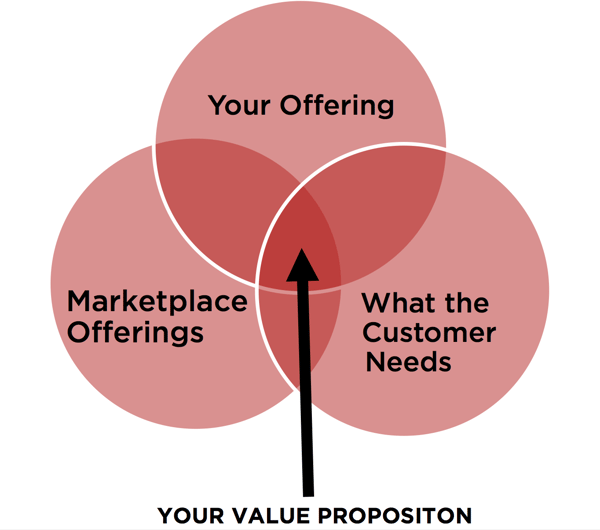Published on
Best Practices to Differentiate Your University in the Corporate Training Space

There’s a lot of “noise” in the corporate education space and competition can be fierce. One critical area that we are always looking at is how to differentiate our continuing education programs and stand out from the crowd. The reason we work on this is because you never want to be seen as a commodity. When your product or service is viewed to be the same as everyone else, price ends up becoming the key differentiation factor, and you’ve automatically lost your edge.
Here are some key techniques to consider:
Learn What Your Customers Want and Help Them Solve Problems – Create programs that meet the needs of the workforce. Provide learning solutions that meet the ever-changing work environment of today. Continually look for ways to create and implement new and innovative programs to keep you a step ahead of the competition. In addition, focus on the best service possible for that client. Take the time to really understand what their goal is, what motivates them and why this goal is important to them, and then develop a program with them in mind.
Create a Culture of Awesomeness
With every student enrollment, there is an opportunity for awesomeness. Every aspect of your programming should be evaluated. How easy is it to maneuver around your website? How easy it to register for a class? What payment options are available? What if I want to talk to someone in person instead of registering online, and are they available and friendly when we talk? What caliber instructor are your students exposed to? Is the content valuable and useful? Was the program engaging? Will it help the participants once they’re back at their jobs?
A culture of awesomeness is found in every program detail. Go beyond the extra mile to make sure that participants are in an environment conducive to learning. When they leave your facility, they’ll be back to take another program before you know it.
Cultivate Relationships
In the end, we are not just in a product business or solution business or a systems business. Most importantly, we’re in a people business. Build relationships not only with clients, but also with employers, professional associations, other educational providers, newspapers and magazines, news media, social platforms, advertisers, bloggers, chambers of commerce, and yes, even with the competition. Customers are careful to spend their limited dollars wisely and are scrutinizing each purchase to make sure they’re making a “safe” decision. They want to buy from educational providers they trust and believe in.
The relationships that you build will be a foundation for future business for you. Everyone is a potential student in one of your open-enrollment or corporate training programs.
To foster these relationships, you must genuinely show that you care, commit to the relationship by spending time cultivating them, share your knowledge (without expecting anything in return), create open lines of communication and dialogue, and be positive.
Pursue New Market Niches, Especially in Unsophisticated Areas
“Wee Willie” Keeler was a major-league ballplayer in the late 1800’s who had eight record seasons in a row, which earned him a hall-of-fame spot despite the fact he was only 5’4″ and used a 30″ bat. When asked what the secret of his success was, “Wee Willie” simply replied, “I hit ’em where they ain’t.”
Tapping into fresh and original types of programs can create vibrant, long-term growth for universities in old and new industries alike. These groundbreaking programs can generate additional sources of profit, bolster the position of the university’s other related programs, and keep competitors always on the defensive.
In addition, delivering programs in a format that meets the consumer’s needs is imperative as well. Consider offering programs in a variety of formats, including digital, so that you can deliver a learning experience for users wherever they are.
Create a Strong Branding Strategy
Your brand is not your product, your logo, your website, or your name. In fact, your brand is much more than that—it’s the stuff that feels intangible. But it’s that hard-to-pin-down feeling that separates powerhouse and mediocre brands from each other.
First and foremost, create and maintain a consistent voice or image in all of your marketing and communications. For example, if some of your promotions are lighthearted and humorous while others are conservative and formal, you are sending a mixed message. Developing a distinctive personality is part of becoming recognizable and unique.
“Every brand makes a promise. But in a marketplace in which consumer confidence is low and budgetary vigilance is high, it’s not just making a promise that separates one brand from another. but having a defining purpose,” explains Allen Adamson, chairman of the North America region of brand consulting and design firm Landor Associates.
What’s your brand’s promise? It should be to create a learning experience so extraordinary, the participant will return to your university time and time again for their learning needs. Your brand may also tell the story that you’re “known for excellence”, known for providing value or you may be known for educating participants in specific job fields, such as IT.
You should be clear on what your identity and branding says. There are direct implications for student recruitment and enrollment, the student experience, and the department’s long-term sustainability.
In conclusion, if university continuing education or executive education departments want their units to survive—much less thrive—in the coming decades, they must confront a challenge: differentiating their institutions from the pack.
Author Perspective: Administrator




